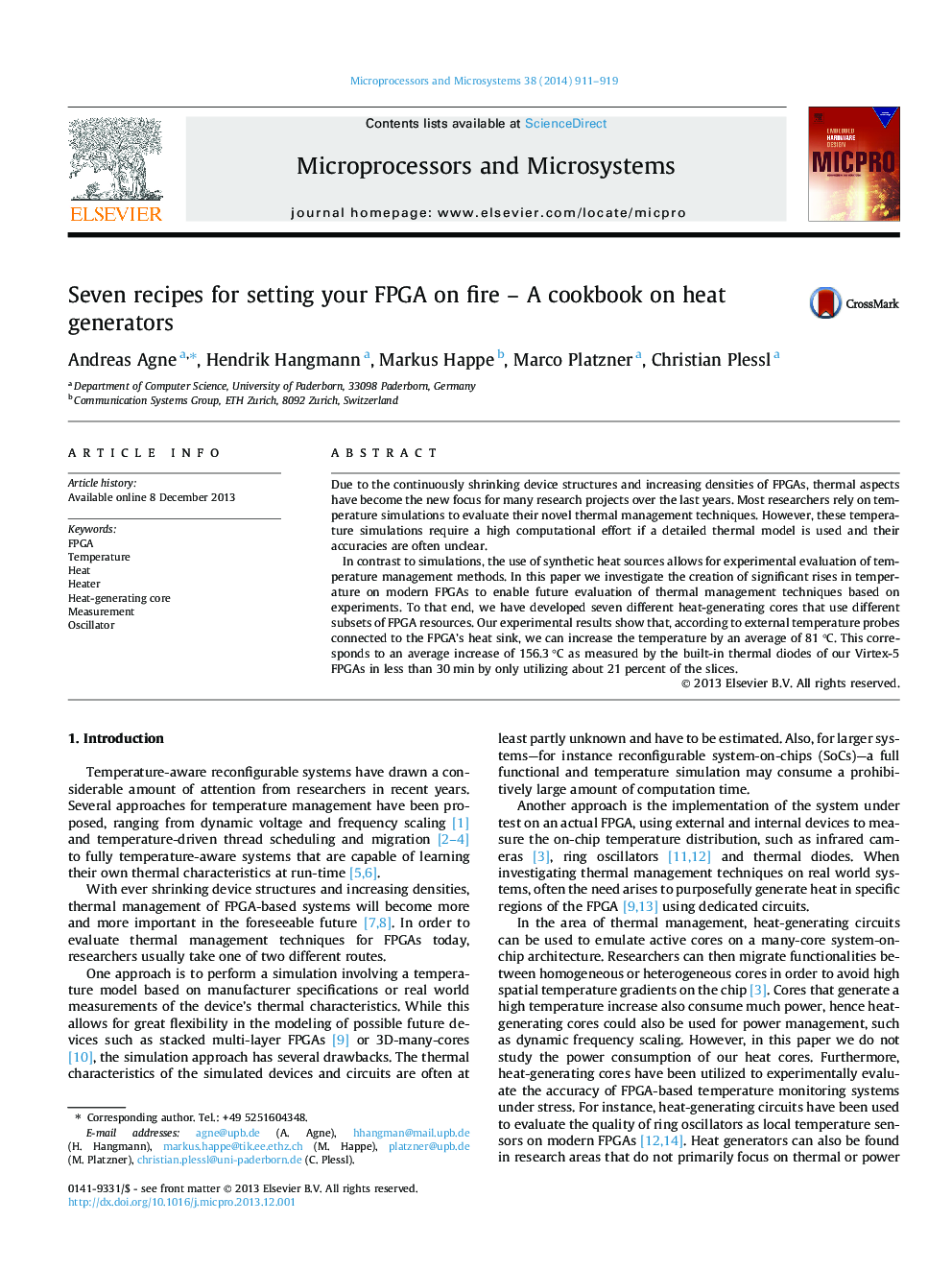| کد مقاله | کد نشریه | سال انتشار | مقاله انگلیسی | نسخه تمام متن |
|---|---|---|---|---|
| 461453 | 696599 | 2014 | 9 صفحه PDF | دانلود رایگان |

Due to the continuously shrinking device structures and increasing densities of FPGAs, thermal aspects have become the new focus for many research projects over the last years. Most researchers rely on temperature simulations to evaluate their novel thermal management techniques. However, these temperature simulations require a high computational effort if a detailed thermal model is used and their accuracies are often unclear.In contrast to simulations, the use of synthetic heat sources allows for experimental evaluation of temperature management methods. In this paper we investigate the creation of significant rises in temperature on modern FPGAs to enable future evaluation of thermal management techniques based on experiments. To that end, we have developed seven different heat-generating cores that use different subsets of FPGA resources. Our experimental results show that, according to external temperature probes connected to the FPGA’s heat sink, we can increase the temperature by an average of 81 °C. This corresponds to an average increase of 156.3 °C as measured by the built-in thermal diodes of our Virtex-5 FPGAs in less than 30 min by only utilizing about 21 percent of the slices.
Journal: Microprocessors and Microsystems - Volume 38, Issue 8, Part B, November 2014, Pages 911–919